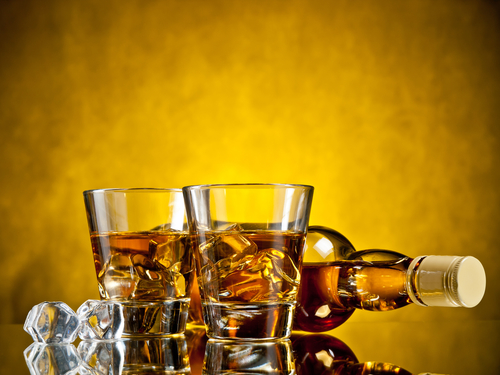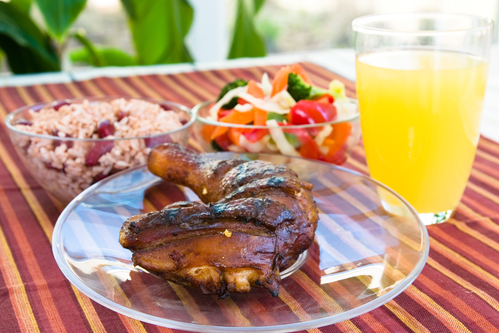The cuisine of the Caribbean islands of Antigua and Barbuda consists of many foods and delicacies that will are likely to excite the tastebuds of travelers and tourists. Some of the most common dishes in the islands include fungie (pronounced foon-jee) and pepper pot. Fungie consists mostly of cornmeal and is quite similar to polenta, a popular Italian dish. Other popular foods and drinks in the islands include seasoned rice, ducana, sugarcake, and tamarind juice among others.Salt fish is a common feature of breakfast in Antigua and Barbuda. The fish is often imported from the neighboring islands of Trinidad and Guyana. This dish is made from salt-cured ling fish flaked into pieces and sautéed with various fruits and vegetables including spinach, pumpkin, eggplant, basic salad, and avocado. Many people prefer to eat their saltfish together with fungee. Mildly sweet fried bread known as Johnny cakes may be taken as a side dish. These breakfast dishes are often eaten at home, especially on weekends after church. Tourists can find saltfish, Johnny cakes, and fungee in locals hotels and restaurants.
Ducana
This dish is quite similar to the tamale and is made from grated sweet potatoes seasoned with pumpkin, coconut, and cinnamon. Once seasoned, the sweet potatoes are wrapped in banana leaves and boiled in water. Ducana is a mildly sweet dish that is often eaten with saltfish. Its texture does not resemble that of fungee, but it is more flavorful. Many culinary experts consider Ducana to be the best use of sweet potatoes in Antiguan cuisine.
Goat water
The word “water” is often used to describe many local dishes in Antigua and Barbuda including goat water, conch water, and cockle. Although the preparations for this dish vary, you are likely to receive a flavorful dish regardless of the preparation method. Goat water consists of cloves and cinnamon and is one of the most favorite dishes in the islands of Antigua and Barbuda.
Jerk chicken
This is a Caribbean staple that originates from the island of Jamaica. This dish is made from chicken coated in spices and slow-cooked over a live fire or grill. The food was made popular by the number of Jamaicans living in Antigua and Barbuda. However, it also did not need to do much to sell itself to the locals because it is so tasty. It is often served in jerk-chicken joints, which are often simple and low-key, consisting of a few grills on the side of the road.
Local seafood in Creole sauce
Some of the most common fish in menus across the islands of Antigua and Barbuda include snapper, mackerel, wahoo, rock lobster, and mahi-mahi among others. You are likely to find these fishes served in local eateries and restaurants as well as luxurious resorts. These catches are often served with Creole sauce and coated with a tasty and spicy mess of onions and pepper and sautéed with thyme and garlic.

Souse
This is a light Caribbean dish made from pig trotters seasoned with lime, onion, garlic, and hot pepper. This dish is often served cold and is quite flavorful. Although many regional variations of the dish exist, it is often cooked first to make it tender before being marinated in the seasonings to pickle. Souse is often served as an appetizer and eaten in homes and restaurants on weekends.
Drinks
There is a wide variety of drinks in the Caribbean islands of Antigua and Barbuda. Fruit juices such as raspberry, mango, tamarind, guava, and lemonade are some of the most popular drinks in the islands. Soft drinks are also readily available with both local and international varieties. Although tea and coffee are also available, they are not quite as popular.
When it comes to alcoholic beverages, rum is king in Antigua and Barbuda much like it is in the rest of the Caribbean. Rum is popular with both locals and tourists. Beer is also quite popular in the islands, Wadadli being the local favorite. Other alcoholic drinks including wine are also available in the country, although not commonly consumed by the locals.

Although tap water in the Caribbean islands of Antigua and Barbuda is generally considered safe for drinking, it is advisable to confirm with your hotel or resort, especially during hurricane season when water in the islands can be contaminated.
Sea moss and sorrel
Some of the most popular non-alcoholic drinks in the Caribbean islands of Antigua and Barbuda are those that are made from sea moss and sorrel. Sea moss is a type of seaweed that is quite popular because many people believe it increases virility. To prepare the drink, the seaweed is dried, boiled, and blended with milk, ice, and sweeteners including nutmeg, cinnamon, and vanilla among others. Sorrel drinks are made from the bright red flowers of the hibiscus plant that are boiled, strained, cooled, and sweetened.
Etiquette
Antigua and Barbuda has some of the most relaxed dining rules in the world. This means that tourists and visitors do not have to worry about making wrong moves. However, it is important to understand how locals dine and behave in an eatery or home of a local. One of the most important rules is that dining is considered a social occasion. Therefore, you should take some time to get to know fellow diners and not to make plans that could force you to leave early, because dining can take quite some time.
There is no hurry in the Caribbean islands of Antigua and Barbuda. Everything just exudes excitement and relaxation. This means that you can arrive a few minutes late, although it is advisable to arrive on time if you can. However, do not dress too casually. Ties and suits are not required, but dressing in a relaxed yet slightly formal manner is acceptable.
If you have been invited into the home of a local, you will most likely be shown a seat. However, do not sit until you have been invited to do so. Meals may begin with either food, drink, or both; as the guest, you may be invited to take your food first.
Place your knife and fork together on the plate once you finish your meal to indicate that you have finished. If in a restaurant, make eye contact with the server to indicate that you have finished eating, but do not wave or call out their name. A tip of about 10 percent is considered polite and appreciative of good service.

